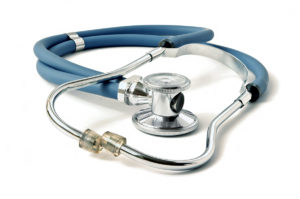 A stroke is a dysfunction of the brain that happens when blood flow to part of the brain is interrupted, reducing the oxygen and nutrient delivery necessary for normal cell function.
A stroke is a dysfunction of the brain that happens when blood flow to part of the brain is interrupted, reducing the oxygen and nutrient delivery necessary for normal cell function.
The following offers some important facts about strokes.
Symptoms
Symptoms vary depending on the location involved. They include trouble speaking, paralysis and numbness of arms, legs and face, balance problems or vision disturbances.
These changes may be permanent if treatment is delayed.
Causes
More than 80 percent of all strokes are related to reduction in blood flow secondary to blood clot (thrombus), which we call ischemic stroke.
Hemorrhagic stroke happens when a break in a blood vessel in the brain leads to blood leak deep into the brain (intracerebral hemorrhage), or around the brain cavity and ventricles (subarachnoid hemorrhage). Certain blood vessel vulnerabilities (aneurysm) can also lead to this type of stroke.
Factors that increase risk of stroke
- High blood pressure (new definition 130/80 or higher)
- Cigarette smoking, including second-hand smoking
- Sleep apnea
- Diabetes
- Heavy alcohol intake
- High cholesterol
- Other factors that cannot be modified, such as age and family history of strokes
Treatment
In the setting of sudden symptoms (brain attack), in the hospital, the use of a clot buster (tPA) within four hours of symptoms or catheter-based clot removal (thrombectomy) within 12 to 18 hours may lead to symptom resolution. Specific medication treatments after stroke include antiplatelet, such as aspirin and clopidogrel, or more intensive blood thinners, such as Warfarin. Treatment also can include cholesterol-lowering medication.
Prevention is more important. This can be achieved by controlling the factors mentioned. Control blood pressure and reduce cholesterol, specifically LDL (low density lipoprotein).
Quitting smoking is essential although many of the vascular injuries may have happened.
Treatment of sleep apnea helps to control blood pressure and reduce the risk of heart rhythm called atrial fibrillation, which can lead to stroke.
Control diabetes and maintain HgA1C less than 7.0 and better than 6.5. Maintain a healthy weight, and eat a balanced diet rich in vegetables and fruits.
Most importantly, exercise regularly and try to achieve 30 minutes of aerobic exercise daily. This has shown to reduce risk of stroke by more than 30 percent.
Finally, remember that an ounce of prevention is worth a pound of cure.
For information, or to make an appointment, call (480) 999-0049. Red Mountain Medical Plaza is located at 8035 E. Brown Road, Building 4.

